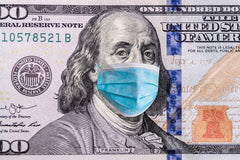Su carrito actualmente está vacío.

- Jan, 08 , 21
- 1 comentario
What Is the Difference Between Disinfection and Sterilization?
Contents
Thoroughly cleaning surfaces and objects is a priority for everyone. In recent months it has become more important as people try to prevent the spread of COVID-19. Subsequently, words like “sterilization” and “disinfection” are being used with increasing frequency. This article will examine the difference between sterilization and disinfection and the types of sterilization and disinfection methods that exist.
By the way, for more efficient cash handling, consider exploring the latest bill counting machines on the market. These devices can save your employees time and reduce the risk of errors in financial transactions, leading to smoother operations and enhanced confidence in your financial management.
Sterilization vs Disinfection
While disinfecting and sanitizing are both decontamination processes, the terms cannot be used interchangeably. Disinfection is the reduction or eradication of dangerous microorganisms from surfaces and objects, whereas sterilization ensures that all pathogens are eliminated. Sterilization methods are most often found in sterile healthcare settings such as hospitals or laboratories. This thorough decontamination method ensures the destruction of spores of multiple organisms that may be present in medication, in liquids, and on surfaces. The process of disinfection does not destroy any bacterial spores.
What Is Disinfection?
As mentioned above, disinfection is less effective than sterilization. However, it is used far more widely and disinfection products are readily available. Disinfection is usually carried out by using disinfectants that have the necessary chemicals in them. Although not as effective as sterilization, disinfectants are very effective at eliminating a large variety of microorganisms. Disinfectants are often inexpensive, user-friendly, and are not toxic.
Types of disinfectants
- Alcohols - a suitably high concentration of alcohol can eradicate a host of viruses including HIV, hepatitis B, and hepatitis C. These disinfectants usually contain isopropyl alcohol and are safe to use and inexpensive to purchase. However, special precautions need to be taken around combustible items.
- Oxidizing agents - these are the most cost-effective home disinfectants and are used when cleaning swimming pools, drains, toilets, and surfaces. These agents cause microorganisms to disintegrate. Oxygen and chlorine are strong oxidizers and are commonly used in cleaning products such as bleach.
- Phenolics - this common disinfectant is present in mouthwashes and Dettol.
- Ultraviolet light - high-strength UV lights can disinfect smooth, cloudy substances.
- Homemade solutions - these can be created easily by mixing water and bleach.
What Is Sterilization?
Sterilization occurs in three methods: physiochemical, chemical, and physical. Chemical methods utilize gaseous and liquid chemicals. Physical methods involve filtration, radiation, and heat. The physiochemical method is a mixture of both the physical and chemical methods.

Types of Sterilization
- Steam - this method of sterilization is practiced in machines called autoclaves. These machines utilize steam heated to very high temperatures (250–273°F). To ensure that the desired object is sterile, it needs to be held for a minimum of 15 minutes at 250°F or for 3 minutes at 273°F. Using autoclave machines ensures the deactivation of all viruses, fungi, bacteria, and bacterial spores.
- Heat - this can take many forms such as boiling water, incineration, dry heat, and tindilization. Heating methods render viruses inactive and eliminate most vegetative bacteria.
- Radiation - This is used to sterilize disposable medical equipment, such as syringes, needles, and IV sets, by using gamma rays, X-rays, electron beams, or subatomic particles.
- Sterile filtration - This method utilizes mechanical filtration to sterilize clear liquids damaged by chemical sterilization, heat, or irradiation. This filtration method is conducted through pores that are smaller than the organisms being sterilized and has to be done slowly.
Why Disinfection Is Important
Consistent cleaning and disinfection removes germs and mitigates the risk of spreading infection. Disinfection needs to be complemented by cleaning to ensure the destruction of most pathogens that exist on surfaces or objects. Cleaning helps to physically remove any dirt and most germs that might have lingered, usings soap and water. Disinfecting after cleaning will significantly remove the number of germs that might still be alive. Disinfection should occur often on surfaces that are frequently touched or shared by multiple people. If surfaces become contaminated with blood and bodily fluids, it is crucial to begin disinfecting them immediately.
Which Surfaces and Objects Should Be Disinfected
“High-touch” objects and surfaces are those which you come into contact with daily, such as light switches, phones, tabletops, keyboards, and remote controls. It is recommended that you use disposable gloves when cleaning and disinfecting surfaces. After you have finished and have removed the gloves, wash your hands with soap and hot water for 20 seconds. This thorough hand washing process is more effective than using hand sanitizer, although hand sanitizer should be used if soap and fresh water are not readily available. Do not use the same cloth to clean multiple surfaces as it can spread germs. Disposable disinfecting wipes should be used when cleaning and disinfecting surfaces.

How to Safely Sterilize and Disinfect
The necessary precautions need to be taken when sterilizing and disinfecting objects. Always make sure to read and follow instructions on disinfectants to guarantee effective use without harming yourself or others.
- Make sure that your skin and eyes are protected in case of any unexpected splashes.
- Make sure that the room has sufficient ventilation.
- Strictly adhere to the instructions on the label and ensure that you use the correct amount.
- When using water for dilution, make sure that it is at room temperature unless the label says otherwise.
- Do not mix chemical products.
- Label cleaning solutions that have been diluted.
- Store and use chemicals away from children and pets.
There are also products, such as sterilizer machines, that may be used to sterilize a variety of objects from the comfort of your own home or business.
Conclusion
Daily disinfection is a necessary part of every household’s cleaning regime and ensures that any pathogens present on high touch household surfaces and objects are eliminated. Sterilization is not often practiced at home and is usually reserved for healthcare settings. Proper precautions need to be taken when sterilizing and disinfecting as the products used may be harmful if not handled correctly.
Search
Recent Post
Archive
- April 2022
- September 2021
- August 2021
- July 2021
- March 2021
- February 2021










1 comentario
Briana Jean
Jan 26, 2022 at 05:37Hello, I was reading this article and I noticed a possible error and wanted to make you aware if you werent already. In the first sentence under the section of sterilization vs disinfectant it says sanitizing;
“While disinfecting and sanitizing are both decontamination processes, the terms cannot be used interchangeably.”
I’m not sure if this is what you meant but just wanted to make you aware!